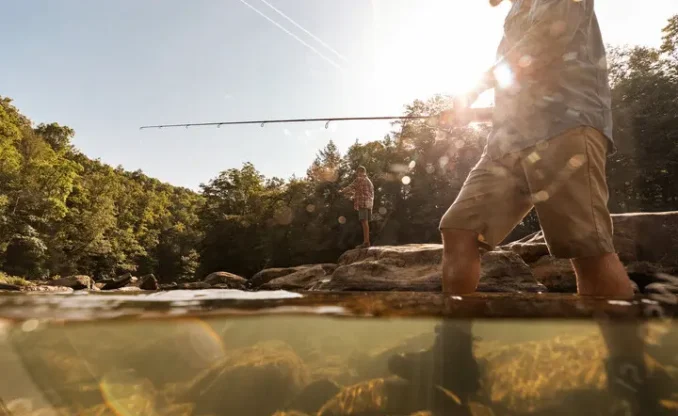Family: Cyprinidae
Common Family: The Minnow Family
Common Name: Common Carp
Scientific Name: Cyprinus carpio
Ecological Description/Identification
Common carp are a long, deep bodied fish with large golden-brown scales in adults (silver in juveniles) with yellowish-orange caudal and anal fins. Common carp also have a long dorsal fin and serrated spines on their dorsal and anal fins. Common carp have two sets of barbels in the corners of their subterminal mouth. Average size of common carp in West Virginia can be from 4 to 10 pounds but can often exceed 20 pounds.
Habitat
Common carp originated from Eurasia and were introduced into North America in 1831 and have since widely expanded their distribution. They can survive a wide range of freshwater conditions but prefer the muddy vegetated pools in small to large lakes and rivers.
Conservation Issues
Common carp tend to root up aquatic vegetation, causing a lack of natural habitat and increased turbidity. Whether rooting up vegetation or eating fish eggs, carp tend to negatively impact native species populations.
Facts
Common Carp are one of the largest, hardest fighting fish in West Virginia waters. They can be caught on topwater with bread, on the bottom with dough baits or advertised “carp baits” and can even be caught on the fly with insect or crawfish imitations. When bowfishing carp, carcasses must be taken back with the angler to avoid wasteful dumping. Common carp have two variants, known as mirror (large scales dispersed randomly on body), and leather (no scales at all) that exist in small numbers in wild populations. The West Virginia length record for Common Carp is 41.0 inches (Charles J. Cook, 1988) and the weight record is 47.0 pounds (Gary Johnson, 1998).
Similar Species
Anglers often confuse common carp with smallmouth buffalo (Ictiobus bubalus). Common carp have a much browner/duller coloration compared to the grey iridescence of smallmouth buffalo. Smallmouth buffalo also have a distinct all-black eye. Also, common carp have noticeable barbels (long fleshy filaments that some anglers may call “whiskers” on catfish) on their upper jaw which buffalo do not have.



